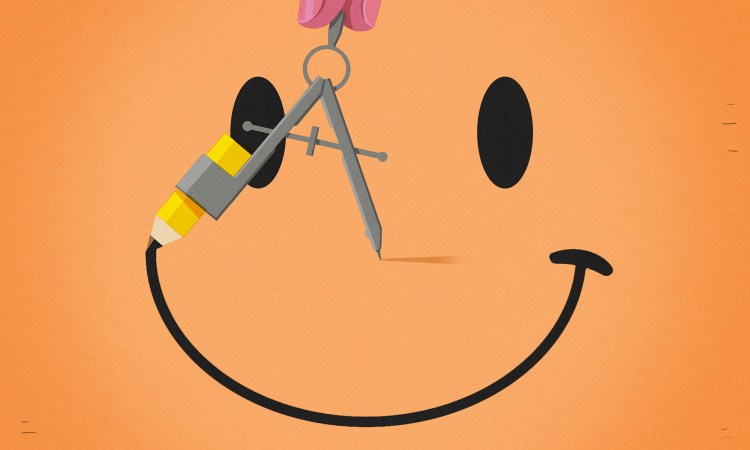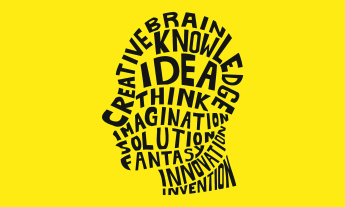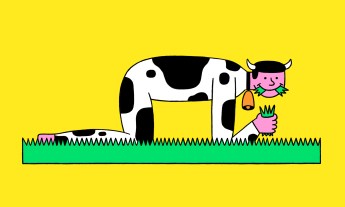
This post is part of TED’s “How to Be a Better Human” series, each of which contains a piece of helpful advice from people in the TED community; browse through all the posts here.
Design thinking is something that we’ve been working on at the Stanford Design School and in the School of Engineering for over 50 years. It’s an innovation methodology that works on services and products and experiences, such as designing a great-looking sports car or a laptop that contains its own built-in mouse.
But I think the most interesting design problem is your life.
I cofounded the Life Design Lab with Dave Evans at Stanford. There, we teach people how to take design thinking — which is both a process and a mindset — and apply it to their own lives. School has taught most of us to be skeptical and to be rationalists, but those aren’t very useful mindsets when you’re trying to do something new, something no one’s ever done before, or something that has no one clear solution. Instead, design thinking says you should start with empathy and lean into what you’re curious about.
At Stanford, Dave and I teach a class called “Designing Your Life,” which we adapted into the book Designing Your Life, Designing Your Work Life and a set of online workshops. We started the class because we’ve been in office hours for a long, long time with students, and we saw that many of them were getting stuck in their lives. What’s more, they didn’t have the tools for getting unstuck.
Now designers get stuck all the time. When I signed up to be a designer, I knew that I was going to work on something brand new, something I’ve never done before — every single day of my career. So I get stuck and unstuck and stuck and unstuck all the time.
One of the most important ways to get unstuck is reframing. It’s one of our most powerful mindsets. Reframing also makes sure that we’re working on the right problem. Life design involves a lot of reframes that allow you to step back, examine your biases and open up new solution spaces. Reframing is essential to finding the right problems and the right solutions.
Many people have beliefs about life which psychologists would label as dysfunctional. If you want to design your life, you need to reframe these beliefs. They hold us back and keep us stuck. I’ll share three of the most common.
Dysfunctional belief #1: “Knowing your passion will tell you what you need to do with your life.”
If you actually have a passion, that’s awesome. Maybe you wanted to be a doctor as long as you can remember. Or you knew at the age of 7 you wanted to be a clown at Cirque du Soleil and now you are one.
To investigate this passion idea Dave and I went over to Stanford’s Center on Adolescence, which by the way now goes up to 27, and we met with professor Bill Damon. He’s studied this question of passion and purpose, and it turns out less than 20 percent of people have a single identifiable passion in their lives. It’s a dysfunctional belief. You don’t need a passion to start designing your life, and the reframe is “you are OK, just where you are”.
Dysfunctional belief #2: “By the time you’re out of college, you should know where you’re going. And if you don’t know, you’re late.”
Here we asked the obvious question, what exactly are you late for? When I was growing up you were supposed to have married and be on track to start a family by about 25. That’s an old-fashioned idea. We know that nowadays people are living their lives much more fluidly, and they are staying in dynamic career motion between the ages of 22 to 35. David Brooks, the New York Times columnist, calls these years the Odyssey Years — when we explore many alternative versions of ourselves.
Dave and I don’t believe in “should’s”. The notion that you “should be somewhere you’re not” and “you’re late” is a dysfunctional belief. We reframe this as “Let’s start from wherever you are; you’re not late for anything.”
Dysfunctional belief #3: “You should try to optimize the best possible version of yourself.”
This is a dysfunctional belief that we really don’t like. Why? It implies that there’s just one singular best and that life is a linear progression towards this singular best. Well, there is no evidence that there is one singular best version of you — we believe there are many, many versions of you and any of them can result in a well-designed life. Our experience is that life is anything but linear. Our reframe: “life design is a journey; let go of optimizing an end goal and focus on the process and see what happens next.”
Now that you’ve practiced some reframing, I’m going to give you five ideas from “Designing Your Life” to try out. They’re the ones that people who’ve read our book or taken our class or workshop told us were the most useful and most doable. After all, Dave and I are human-centered designers, so we want to be helpful.
Designing your life idea #1: Connect the dots
The #1 reason that people say they took our class or read our book is they want their life to be meaningful or purposeful. Dave and I looked in the positive psychology literature and in the design literature and found that there are three important identities that shape our lives: who you are, what you believe and what you do.
If you can make a connection between these three, you will experience your life as more meaningful. To help connect the dots, we do two things. The first thing is we ask people to write about why they work — your work view. What’s your theory of work? What’s it for? What’s work in service of? We ask them to write around a page about this.
The second thing is a little harder to do in a single page, but we still ask people to try and write up their ideas on the meaning of life. Why are you here? What is your view of how the world works — your life view?
When you can connect your work view and your life view together in a coherent way, you’ll start to experience your life as meaningful.
Designing your life idea #2: Recognize your gravity problems
There’s a class of problems that people can get stuck on, and we call them “gravity problems”. By that, we mean problems that are just circumstance, like gravity. You either can’t change these circumstances, or you are not willing to do what it would take – these are problems you cannot change.
You probably have a friend you’ve been talking to for a while, and they’re stuck. They don’t like their boss, or they don’t like their partner, or they don’t like their job. However, nothing’s happening with that problem. Dave would say, “You can’t solve a problem that you’re not willing to have.” He means if you’ve got a problem and you’re simply not willing to work on it, then it’s just a circumstance in your life. It is a gravity problem. The only thing we can do with gravity problems is to accept them.
Once you’ve accepted that you have a gravity problem and you can’t change it, you have to decide: What do you want to do? Is this a circumstance you can reframe and “work with”? Or do you need a “work around” – and do something completely different?
Be really careful about a gravity problem, because it’s pernicious and can really get in your way. Accept it and then decide on a “work through” or “work-around” strategy to move forward.
Designing your life idea #3: Brainstorm your possible futures and make three Odyssey Plans
For this idea, let’s go back to this idea of multiples. I like to do a thought experiment with my students. I say, “physicists have demonstrated that this multiverse-thing might be real; there are multiple parallel universes that are one right next to each other. Let’s say you could live in all the multiverses simultaneously. Not only that, but you’d know about your life in each one of these instances. You could be a ballerina and a scientist and a CPA or whatever else you ever wanted to be. You could have all these lives in parallel, so how many lives would you want?”
I get answers from 3 to 10,000, but on average, most people think they have about 7 ½ really good lives that they could live.
Then I say, “Great! There are more lives than one in you. So let’s go on an Odyssey and ideate those other lives. We’re going to ideate your future – and you can’t ideate just one — you have to ideate three.”
There’s some research from the Stanford School of Education that says if you start with three ideas and you brainstorm from there, you get a much richer and a wider range of ideas. The ideas are more generative and lead to better solutions than if you’d just started with one idea and brainstormed from there. I also think there’s something magical about threes. When we help people imagine three completely different lives, we’ve found that it can be transformational.
To guide them, we give them this rubric.
Life #1 is the life and job that you’re currently living — just make it better. Put in all the bucket list stuff you want to do. Maybe you want to go to the Galapagos or write a book or bicycle across the country. It’s your life and your job as you’re living it now, but your job goes great and your life includes all the extra interesting things that you’ve thought about doing.
For Life #2, let’s pretend that your job just doesn’t exist anymore. The AI and robots have come, and your job has disappeared. What are you going to do instead? What will you do if Life #1 goes away?
And for Life #3, this is your wild card plan. What would you do if you didn’t have to worry about money? If you had enough money — not so much that you’re fabulously wealthy but enough and to live on — what would you do? And what would you do if you knew no one would laugh at you? Maybe you’d go to study butterflies for a living or be a bartender in Belize. Whatever, it’s your wildcard!
What happens when people do these Odyssey Plans is that they realize that these three parallel lives are all pretty interesting. And doable. They also realize there are things, life ideas, that got left behind in the business of life and bring them back into their plans. Sometimes, because of this exercise, folks decide to pivot to an entirely different life plan. Mostly they use this as a method to ideate all the possible wonderful ways that they could live.
Designing your life idea #4: Build some prototypes
You could immediately start executing one of your Odyssey lives, but in the design process, the thing you do after you come up with lots of new ideas is you start prototyping.
The science-fiction writer William Gibson has a famous quote: “The future is already here. It’s just unevenly distributed.” To discover this future, we prototype. When we say prototyping, we ask the question: “What would it be like if I tried this possible future in some small an easy to execute way?”
Prototypes help you expose your assumptions. It’s easy. You can have what we call a prototype conversation. There’s already someone bartending in Belize — she’s been doing it for years. You could talk to her and have a conversation about her experience. And rest assured, somebody, somewhere is doing the thing you want to prototype, the thing you’re you’re interested in. They’re living in your future. All you have to do is talk to them! When you have a conversation with them, they’ll tell you their story. If you hear something that rings true for you, you can identify that as a potential way of moving forward.
Instead of a prototype conversation you could also try a prototype experience. Dave and I were working with a woman in her late 40s. She was in the middle of her career and a very successful tech executive, but she told us she wanted to move her career from money-making to meaning-making. One idea was to go back to school, get a degree in early childhood education, and start working with kids.
But she said, “I don’t know; I’m 45. Going back to school — is that going to work? And I heard about millennials and how they don’t like people my age. How do I prototype this?”
We said, “You just have to go try this, it’s a prototype experience.” We sent her to sit-in on an education class. She wasn’t registered, but she just went in and sat down to listen. When she came back to us, she said, “It was fantastic. I walked into the lecture hall. I sat down; my body was on fire. The lecture was so interesting and then I met these millennials, and it turns out, they’re pretty interesting people. They think I’m interesting too because I’m going back to school at 45. I’ve set up three prototype conversations with them!”
The lesson here: We are more than just our brains, and when you have a felt experience — meaning an experience in your body — that’s a great way to find out if one of your ideas might work for you.
Designing your life idea #5: Choose well
When many people make decisions, they end up not being happy with them. So many of us have FOMO, the fear of missing out and we worry: “What if I didn’t pick the right thing?” Or, “I’m worried about whether or not I made the best decision, and what if I want to change my mind?”
Narrowing down your choices can be quite simple if you understand the psychology of decision-making. After the rational pro-con lists, choosing is about that feeling in your stomach. Pay attention to your felt sensations, the feelings that you experience in your body. Without your emotions and your gut feelings, you can’t make good decisions.
After following your gut, you need to let go of all the other options and move on. By the way, this has always been the hardest part for me. But there is evidence that “going all in” is the best way to choose. In a psychology experiment run by Harvard University professor Dan Gilbert, researchers showed five Monet prints to participants and asked them to rank them from best to least.
Afterwards, the researcher said to some participants, “I bought too many of prints two and three. If you want to take one home, you can keep it.” With the other participants, the researcher said the same thing but added, “If you don’t like the one you picked out, you can come back and exchange it for another one.”
Then, they brought the people back a week later and asked them, “Which print do you like now?” they found the people who were allowed to change their minds didn’t like the print they took, and they actually didn’t like any of them anymore.
Meanwhile, the people in the other group — the ones who were told they could not change their mind — loved their print. They liked it the best and ranked it even higher than before. The lesson from this experiment is that when given the option, the reversible condition is not conducive to creating happiness. So, go ahead and make a good choice, and then make it irrevocable. You will be happier.
Once you get good at gathering, creating and choosing ideas, you also want to make sure you leave room for lucky or serendipitous ideas. Being lucky is about paying attention to the task at hand while keeping your peripheral vision open. It’s in your peripheral vision that interesting opportunities show up that you were not expecting. Taking advantage of these opportunities is how we define “luck”.
To recap, these are my five life design ideas: 1) Connect your dots to find meaning; 2) Be wary of gravity problems; 3) Do three Odyssey Plans, or three ideations for your life; 4) Prototype everything; 5) To choose well, make your choices emotional and irrevocable.
We know you can design your life because thousands of students, mid-career folks, and folks thinking about retirement have already done it. Two PhD studies have concluded that our class develops higher self-efficacy and lower dysfunctional beliefs in people. And that helps them feels what David Kelley calls “creative confidence”. It’s been fascinating to watch our students go through the class and walk out, saying, “You know what? I’m guess I am a pretty creative person.”
The designing your life idea is pretty simple — get curious, talk to people, try stuff and tell your story. That’s how you achieve a well-designed life, one that’s generative, constantly creative, productive, changing, evolving and where there’s always the possibility of surprise.
This post was adapted from a TEDxStanford Talk. Watch it here:
















